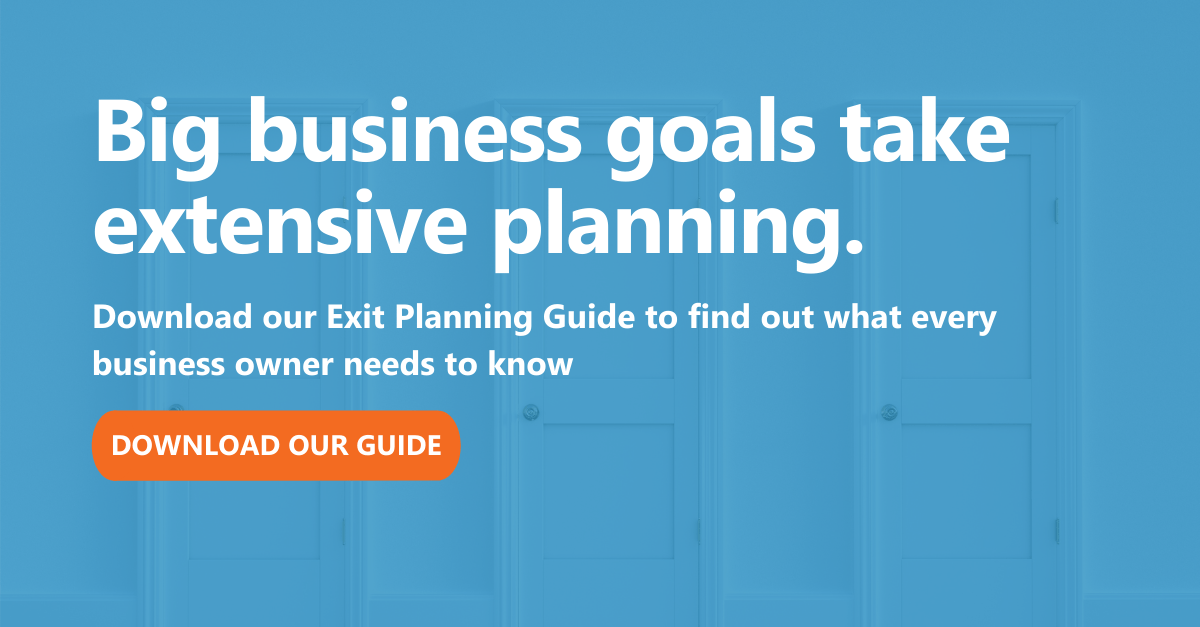Roadmap to Successfully Exit Your Business
When starting a business, owners have numerous factors to consider to get the business up and running. Although sometimes overlooked when starting a company, one thing that should be considered is the long term goal to exit the business.
One thing you should evaluate when considering your exit is timing and when to start planning. For many owners, an exit strategy is a way of getting their pot of gold at the end of the rainbow. How far in advance should you start planning? Properly preparing for an exit takes years, so the earlier you begin, the better!
Start the ConversationKey Considerations for Planning Your Exit
- Think ahead years in advance to maximize all objectives
- Plan to increase the value of your business
- Drive to command higher multiples
- Start improving systems and processes
- Build an advisory team
- Reduce business and financial risk
You also need to evaluate and understand your objectives. Once you’ve set a date, build clear definitions and objectives around that date. Consider aspects of your personal, professional, and financial life as you begin the exit plan process. Determine the reasons for your exit; do you plan to retire, start a new career, etc.? Once you determine the reason, you can better plan financially and determine how much money is needed to meet these objectives along with a related action plan.
It’s necessary to evaluate your business’ current value and desired value. Determine what the desired value is, and the steps needed to get your business there. You should evaluate items such as Multiple of Earnings Before Interest, Taxes, Depreciation and Amortization (EBITDA), multiples of revenue, the value of assets, marketability assessments, and formal valuations to help close any gaps.
You will need to evaluate items that maximize business value and understand the risks and metrics that drive value. These items include reliable financial reporting, profitability vs. industry averages, customer concentration, recurring vs. one-time/project revenue, management reliance on owner, and scalability and infrastructure. Focus on improving these over time by creating an action plan. Once the value of your business is maximized, you are ready to consider the various types of buyers.
Options for Finding Potential Buyers and Cashing-Out
- Go Public IPO: Going public can be a huge morale boost for employees and incumbent investors, however, the process requires at least 3 years of advance planning.
- Strategic Buyer: You are selling to another company who sees value in your company as it is integrated into theirs.
- Private Equity/Venture Capital: This option leaves the shared service team of an acquired business intact and takes the company to the next level.
- Outside Third Party: A third-party may not be in the industry but can produce a high sales price for the business.
- Insider – Employee: The continuity of the business often remains intact with this option.
- Employee Stock Purchase Plan (ESOP): The owner can cash out when no other potential buyers are available.
We Can Help
If you are considering exiting your business and need assistance in creating a roadmap to successfully do so, contact Signature Analytics. We can assist in evaluating your business and create an action plan to maximize its value!








